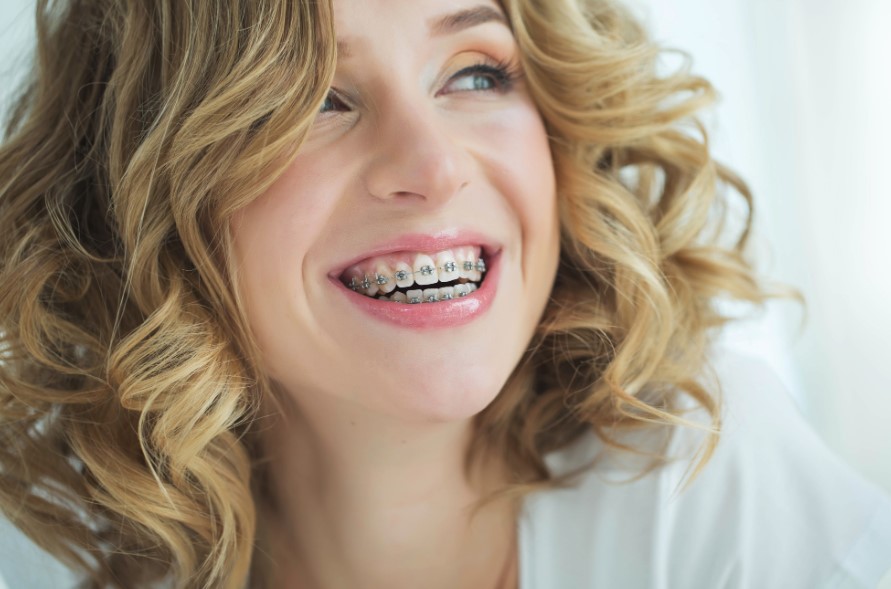Are you tired of hiding your smile because of crooked teeth? Are you looking for options to straighten them out but don’t know where to start?
Look no further! In this blog post, we’ll explore six different teeth straightening options that can help give you the confident and beautiful smile you deserve. From traditional braces to clear aligners, there’s a solution for everyone.
So let’s dive in and discover which option is best for you!
1. Traditional Metal Braces
If you’re looking to get traditional metal braces, you’re in luck – they’re one of the most popular and affordable options for teeth straightening. Traditional metal braces are made of high-quality stainless steel, making them durable and long-lasting.
They’re also smaller and less noticeable than ever before. While traditional metal braces are a great option for many people, there are a few things to keep in mind. First, they can be uncomfortable at first.
You may need to adjust to wearing them for a few weeks. Second, traditional metal braces can be more visible than other types of braces, so if you’re looking for a more discreet option, you may want to consider another choice.
If you’re considering traditional metal braces, talk to your orthodontist about what’s right for you. They can help you weigh the pros and cons of these popular teeth straightening options and choose the best treatment plan for your smile!
2. Clear Aligners
If you’re considering teeth straightening, clear aligners may be the right choice for you. Clear aligners are virtually invisible, so they’re a great option if you want to straighten your teeth without anyone knowing.
They’re also removable, so you can take them out to eat and brush your teeth. Clear aligners are custom-made for each individual, so they fit snugly over your teeth and apply gentle pressure to gradually move your teeth into alignment.
The average treatment time for clear aligners is about 12 months, but this can vary depending on the severity of your misalignment. If you’re looking for a discreet way to straighten your teeth, clear aligners may be the right choice for you.
3. Ceramic Braces
Ceramic braces are one of the top six options in teeth straightening. Ceramic braces are a more subtle treatment choice, as they are made of clear material or white that blend in with the teeth, making them much less obvious than metal braces.
Ceramic braces are typically a bit more comfortable than metal braces as they can often be smaller. These braces have no metal parts, so they don’t cause as much irritation on the inside of the mouth as metal braces can.
Ceramic braces are also less likely to stain with coffee, tea, or other foods since they aren’t metal-based. Ceramic braces can achieve the same results as metal braces; the only downside is that they are a bit more expensive.
Make sure to check out this article about a clear comparison between Metal braces and Ceramic Lightforce Braces. This will surely help you to make an informed decision.
4. Lingual Braces
If you’re looking for an alternative to traditional metal braces, lingual braces may be the right choice for you. Lingual braces are attached to the back of your teeth, making them virtually invisible.
They’re a popular choice for adults who want to straighten their teeth without drawing attention to their orthodontic treatment. Lingual braces are custom-made to fit your teeth and bite.
They’re usually made of stainless steel or titanium and bonded to the back of your teeth with special cement. Your orthodontist will need to take special X-rays and impressions of your teeth to make sure the braces are a good fit.
Like traditional metal braces, lingual braces can take some time to get used to. You may experience some discomfort and soreness when you first get them, but this should go away after a few days.
5. Invisalign
When it comes to teeth straightening, there are a lot of options to consider. One popular option is Invisalign. Invisalign uses clear aligners to straighten teeth gradually over time.
This treatment is almost invisible, so it’s a great option for people who want to straighten their teeth without anyone knowing. Invisalign is a great option for people who have mild to moderate misalignment.
It can also be used to treat more complex cases but may require additional treatments such as wearing rubber bands or palate expanders.
The average treatment time for Invisalign is about 12 months, but this can vary depending on the severity of the misalignment. After treatment is completed, patients will need to wear a retainer to keep their teeth in place.
If you’re considering Invisalign, be sure to talk to your dentist or orthodontist to see if it’s the right option for you.
6. Retainers & Splints
Retainers are one of the most common devices used for teeth straightening. They are usually made of plastic or metal, and they work by holding your teeth in place while they adjust to their new position.
Retainers are typically worn for a few hours each day, and they can be removed for eating and brushing your teeth. One advantage of retainers is that they are relatively inexpensive.
Another advantage is that they can be worn for a long period if necessary. However, one downside of retainers is that they can be uncomfortable to wear, and they may irritate your gums.
Splints are another type of device that can be used for teeth straightening. Splints are usually made of plastic or metal, and they work by holding your teeth in place while they adjust to their new position.
Explore Your Teeth Straightening Options Today
Teeth straightening options are a great way to improve your smile.
Whether you choose braces, Invisalign, dental veneers, or any other form of teeth straightening treatment, it is important to make sure that you speak with your dentist first to determine which oral health option will be best for you.
With the right advice and guidance from your dentist, you can soon have the perfect smile that will last a lifetime.
Did you find this article helpful? Check out the rest of our blogs!










